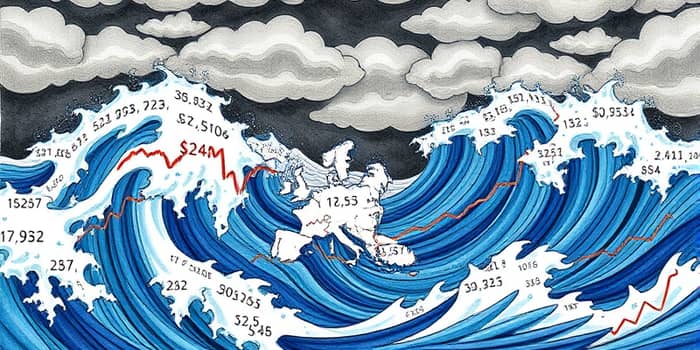
Since early 2022, major central banks have embarked on a historic reversal of pandemic-era asset purchases, ushering in an era defined by shrinking balance sheets and tightening financial conditions. This synchronized global effort, known as quantitative tightening (QT), aims to rein in inflation but also removes key liquidity supports that boosted markets in recent years. As a result, new volatility regimes are emerging, demanding fresh strategies and vigilant risk management. This deep dive unpacks the mechanisms, impacts, risks, and adaptive measures investors need to navigate this transformed landscape.
Quantitative tightening is the process by which a central bank systematically removes liquidity from markets by either selling securities on the open market or allowing maturing assets to run off without reinvestment. In contrast to quantitative easing—where policymakers inject cash and lower borrowing costs—QT exerts upward pressure on interest rates and can exert downward pressure on asset prices. There are two primary methods:
By dialing back their balance sheets, central banks intend to cool inflationary pressures, but they also shrink liquidity buffers, a trade-off that shapes financial stability and market dynamics.
Starting in mid-2022, the US Federal Reserve, Bank of England (BoE), European Central Bank (ECB), Reserve Bank of Australia (RBA), Reserve Bank of New Zealand (RBNZ), Bank of Canada, and Sweden’s Riksbank initiated QT programs. The Fed’s balance sheet peaked near $9 trillion before falling by nearly $2 trillion through outright sales and passive runoffs. Meanwhile, the BoE reduced its gilt holdings by over £100 billion, and the ECB scaled down its asset purchase program by approximately €500 billion.
Analysts estimate that every $1.2 trillion of balance sheet reduction is equivalent to a 15 basis-point rate hike in normal market conditions, with that effect potentially rising to 70–75 basis points in stressed environments. Across jurisdictions, the common goal is to achieve “ample reserves” rather than a zero-policy stance, signaling that QT will taper once sufficient liquidity remains.
By raising interest rates sharply and steepening yield curves significantly, QT reshapes the risk–reward calculus for investors. Government bond yields have climbed as much as 50 to 100 basis points around major QT announcements, while steepening curves reflect higher term premia. The policy shift also reduces the “convenience yield” of sovereign debt, making safe assets relatively less attractive.
Transmission channels include:
With central banks stepping back, institutional players—mutual funds, pension funds, insurance companies—must step in, often demanding higher compensation for added risk. This dynamic amplifies short-term swings and ushers in volatility regimes where market stress can spike unexpectedly.
The combination of QT and aggressive rate hikes exposes vulnerabilities. The UK gilt crisis of September 2022 highlighted how quickly reduced central bank backstops can trigger funding dislocations and forced selling. Prime broker and repo market strains become more pronounced when large sellers enter thin markets, and haircuts on collateral can widen swiftly, compounding liquidity stress.
Policymakers have underscored that QT will be carefully sequenced and clearly communicated to avoid destabilizing surprises. Nonetheless, financial conditions could tighten more than expected if fiscal deficits expand and government debt issuance continues to rise. In such scenarios, unexpected market jolts may occur, testing the resilience of current frameworks.
Empirical studies show that market volatility indices, like the VIX for equities and MOVE for bonds, tend to rise around QT milestones. A review of the 2022–2023 period reveals:
Furthermore, cross-country analyses confirm that active QT (asset sales) has a larger impact on yields and volatilities than passive runoff, underscoring the importance of policy execution choices.
In an environment of higher baseline volatility, investors must recalibrate risk models and operational protocols. Key strategic adaptations include:
By updating liquidity stress tests and adopting real‐time risk analytics, portfolio managers can identify vulnerabilities early and seize tactical opportunities arising from policy-driven repricings.
Looking forward, several factors will influence the path of QT and its market effects. Persistent inflationary forces, elevated fiscal deficits, and election cycles—such as potential policy shifts in the United States—add layers of complexity. Central banks are expected to slow runoff rates once reserve levels near policy-defined thresholds, but the timing remains uncertain.
Markets should watch key indicators: the Federal Reserve’s reverse repo facility utilization, government debt auction yields, and repo market haircuts. Sudden jumps in these metrics may signal tightening stress beyond what rate increases alone would produce. As liquidity buffers wane, even minor shocks could trigger outsized volatility.
Quantitative tightening represents a paradigmatic shift from the easy-money policies that have prevailed since the global financial crisis. Investors, risk managers, and policymakers must confront a world where central banks are net sellers of bonds, not buyers. Adapting to this new reality demands creativity, robust risk frameworks, and continuous vigilance.
Embracing flexible, data-driven strategies, strengthening operational resilience, and staying attuned to policy signals will be critical. In doing so, market participants can not only mitigate downside risks but also capture value in a landscape defined by evolving volatility regimes.
References













